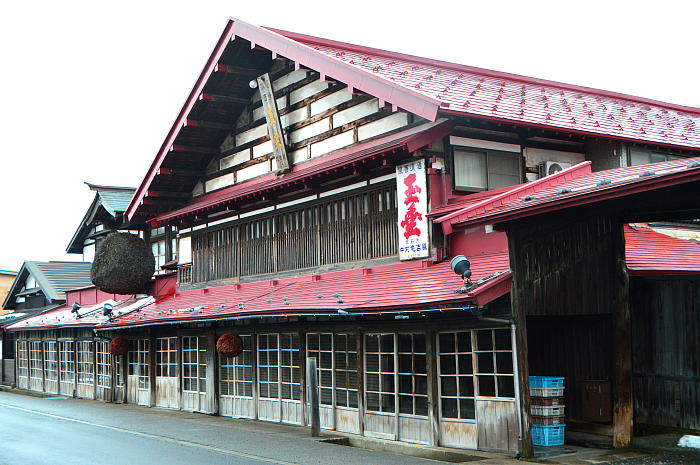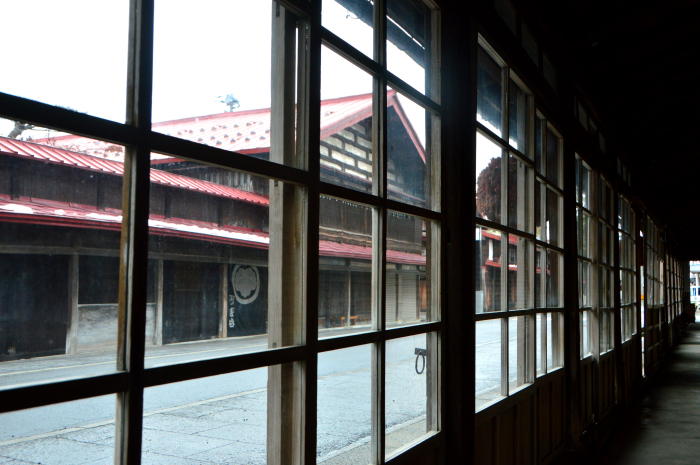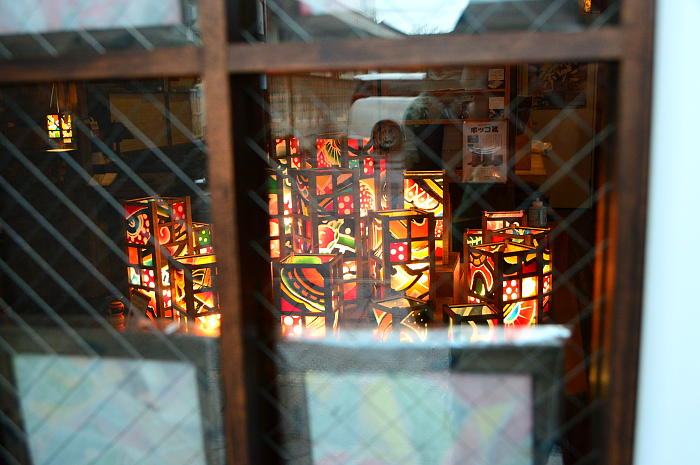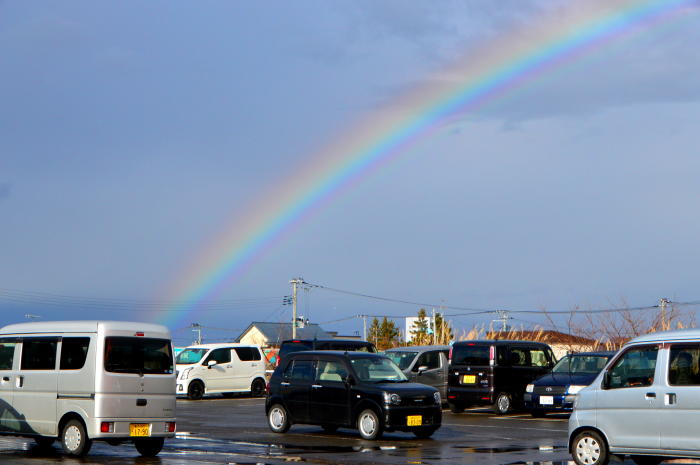|
since 1998/04/20 |
 |
  |
|
ショッピングサイト         >>(指定券予約)     便利サイト(全国版)  Yahoo検索 Yahoo検索 Google検索 Google検索 Yahooニュース Yahooニュース Google翻訳 Google翻訳 日本気象協会・天気予報 日本気象協会・天気予報 レーダー雨雲(動画) レーダー雨雲(動画) ひまわり画像 ひまわり画像 気象庁 気象庁 Google地図 Google地図 住所から地図検索 住所から地図検索 地図から住所検索 地図から住所検索 国土地理院地図 国土地理院地図 地図_時間距離測定 地図_時間距離測定 Jorudan路線.運行情報 Jorudan路線.運行情報 郵便番号案内 郵便番号案内 タウンページ タウンページ 総務省 総務省 厚生労働省 厚生労働省 経済産業省 経済産業省 農林水産省 農林水産省 環境省 環境省 消費者庁 消費者庁 国税庁 国税庁 法務局 法務局 日本年金機構 日本年金機構 協会けんぽ 協会けんぽ PCウィルス対策室 PCウィルス対策室 最新PCウィルス情報 最新PCウィルス情報リンクサイト (パソコン関連)  Windows11 情報 (2025/12/07) Windows11 情報 (2025/12/07) エクセル Q/A エクセル Q/A
|
|
次回は 2025.12.14 に更新予定です。 積雪前のこみせ通り
・・・ 11月の中旬に一度積雪があってしばらくの間雨の日が多かったのですが 12月に入ってからは次第に気温の低い日が多くなり、次第に雪が積もりそうな 天候となってきました。そろそろどんと積雪が来そうな空模様です。 そんな日常なので空の色も次第に灰色となり、この前までにぎやかだった 「熊の出没」も12月になってからはしばらく耳にしなくなってきました。 黒石市内の各家では昨年冬の豪雪で屋根が壊れたところが たくさんありましたが、その多くはまだ修繕が進んでいない状態です。 また、倒壊した空き家の多くはまだ撤去されぬまま放置されています。 ------------- There was a single snowfall in mid-November, followed by many rainy days for a while. As December began, the number of colder days gradually increased, and the weather gradually became more conducive to snow accumulation. It looks like the snowfall will soon be on its way. As this is the norm, the sky is gradually turning gray, and the previously lively rumors of bear sightings have become less common since December began. Many homes in Kuroishi City suffered roof damage from last winter's heavy snowfall, but many of these repairs have yet to be completed. In addition, many collapsed vacant homes remain abandoned and have not yet been removed. ------------- (注)
「黒石八郎のホームページ」を見てください。 皆様の「八ちゃん」へのご支援をお願いいたします。 黒石八郎さんの公演依頼の申し込みは直接、電話 or Faxで (0172-28-3028) へお願いします。 これまでにここで紹介した写真の履歴(過去52週分)
これ以前の物は順次削除しています。 -------------------------------- 令和7年産の「新そば」の販売は11月1日から発売開始しました。 12月末までが「新そば」という名称になります。 -------------------------------- 最近のそば生産組合牡丹の活動は ここをクリックして下さい。 --------------------------------
|
>>對馬が作っているページ |
 對馬省次の近況(2025/6/29) 對馬省次の近況(2025/6/29) 花壇の山野草(2025/6/21) 花壇の山野草(2025/6/21) 黒石近郊の山野草(2024/6/23) 黒石近郊の山野草(2024/6/23) 山行で出会った高山植物 山行で出会った高山植物 海外のりんご探索旅行(2023年) 海外のりんご探索旅行(2023年) 猿賀神社祭礼動画(2025/5/7) 猿賀神社祭礼動画(2025/5/7) りんご文化研究所(2019年) りんご文化研究所(2019年) 津軽伝統のずぐり(2023/1/30) 津軽伝統のずぐり(2023/1/30) 黒石旧正月マッコ市(2023年2月) 黒石旧正月マッコ市(2023年2月) 五所川原立佞武多(2023年8月) 五所川原立佞武多(2023年8月) 黒石よされ祭り(2025年8月) 黒石よされ祭り(2025年8月) 黒石大川原火流し(2025年8月) 黒石大川原火流し(2025年8月) クアラルンプールの報告(2025年11月) クアラルンプールの報告(2025年11月)>>リンクサイト(青森県内)  黒石の天気(tenki.jp) 黒石の天気(tenki.jp) JAL発着情報 JAL発着情報 ANA発着情報 ANA発着情報 FDA発着情報 FDA発着情報 新幹線空席情報 新幹線空席情報 高速道路の交通情報 高速道路の交通情報 映画館情報(弘前イオンシネマ) 映画館情報(弘前イオンシネマ) 映画館情報(シネマビレッジ柏) 映画館情報(シネマビレッジ柏) 映画館情報(イオンシネマ新青森) 映画館情報(イオンシネマ新青森) 映画館情報(青森市内2館) 映画館情報(青森市内2館) 黒石八郎HP(2025/5/7) 黒石八郎HP(2025/5/7) 伊奈かっぺいHP(2025/11/27) 伊奈かっぺいHP(2025/11/27)>>マイツールの話し  ともだちの友達!(2025/11/8) ともだちの友達!(2025/11/8) マイツール・ワールド マイツール・ワールド マイツールリンク集 マイツールリンク集黒石のホームページ  黒石市民財団(2025/11/17) 黒石市民財団(2025/11/17) そば生産組合牡丹(2025/11/09) そば生産組合牡丹(2025/11/09) 津軽こみせ株式会社 津軽こみせ株式会社 マルサ佐藤製作所 マルサ佐藤製作所 黒石特別養護老人ホーム 黒石特別養護老人ホーム レストラン御幸 レストラン御幸 黒石ねぷた 黒石ねぷた 黒石商工会議所 黒石商工会議所 黒石観光協会 黒石観光協会 黒石市役所 黒石市役所 りんご歴史研究所 りんご歴史研究所 弘前茂森新町町会 弘前茂森新町町会 黒石いきいき太極拳クラブ 黒石いきいき太極拳クラブ AITC・りんご研究所 AITC・りんご研究所 活彩あおもり(青森県庁) 活彩あおもり(青森県庁) |




